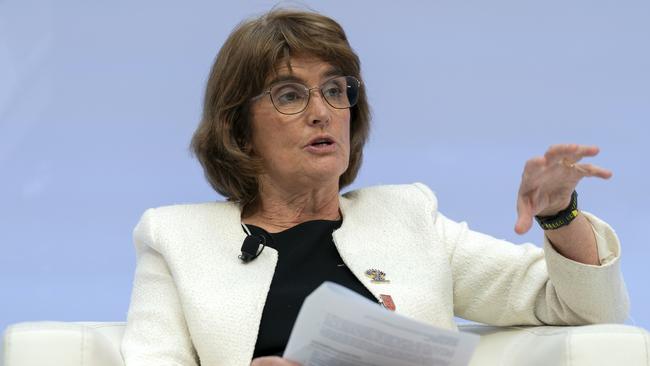RBA to walk rate-cut path with dangers on both sides
The Reserve Bank of Australia is set to cut rates and keep on cutting until the official cash rate is at a far less restrictive level.

The three-year battle to tame Australia’s worst inflation surge in four decades has been wearying for the Reserve Bank of Australia. At last, the guns have fallen silent, and a string of interest rate cuts are being locked and loaded.
With both headline and core inflation back within the RBA’s 2 per cent to 3 per cent target band in the first quarter, the mood at the central bank is likely one of relief that the “scourge” has ended.
Those responsible for economic forecasting at the bank will feel some satisfaction that the data has aligned with expectations, and that a soft landing is playing out.
Though it likely doesn’t feel that way for RBA staff, victory was achieved relatively quickly considering that at its peak near 8.0 per cent in late 2022, consumer price growth was high enough to unmoor inflation expectations.
The fallout could easily have been a lot uglier.
The RBA was able to cool prices without the hammer blow of soaring interest rates that other central banks used, and the payoff is visible in low unemployment.
Conditions at home are now in place for the RBA to cut rates further in a few weeks.
Meeting as global trade tensions simmer in the background adds a sense of urgency to the case for lower interest rates.
While the trade war will both dent growth and stoke inflation, confusing the picture for central banks, Australia’s economic reliance on China – and Asia more broadly – means the risk of a slowdown will outweigh other concerns.
The RBA is set to cut in May and keep on cutting until the official cash rate is at a far less restrictive level.
That’s as much as 100 basis points away.
A significant caveat to that is the prospect that the trade war completely hobbles supply chains, creating a shock that once again drives up prices.
The question for the RBA is whether to frontload easing with a 50-basis-point reduction this month, or move more cautiously with a 25-basis-point cut.
It can be argued that the central bank is already behind the curve, as economists like to say, and a rapidly dimming global growth outlook should pave the way for a big rate cut.
Policy settings are tight, and there’s a growing need for the RBA to take its foot off the economy’s neck. Recent inflation numbers alone justify easing and the global turmoil adds urgency.
But while there is growing evidence that the Trump White House’s erratic economic policies are sapping momentum from the US economy, the same can’t be said for Australia, where business activity indicators and the job market are holding up.
The risk for the RBA is that this picture of relative calm changes quickly as China’s economy misfires, leaving Australia further adrift from where the official cash rate should be.
Still, it’s looking more likely that the RBA will be cautious and opt for a reduction of 25 basis points this month, while expressing deeper concern about the trade upheaval threatening global growth.
The central bank will stress that there is a wide range of potential outcomes for the world economy this year, while noting that financial markets have mostly recovered their composure after the White House paused some tariffs.
There’s also positive news around trade negotiations, though the future of US-China relations remains anybody’s guess.
More worryingly, Trump has continued to attack Federal Reserve chair Jerome Powell for not lowering interest rates, calling him a fool after the US central bank’s measured decision this week to balance growth and inflation risks.
Relations between the Fed and the White House are worth keeping a close eye on, arguably more so than trade spats.
They are a reminder of the potential for the Trump administration to do dangerous things that could crush market confidence in the blink of an eye.
The destruction of trust in the way the Fed conducts policy would fuel inflation fears and massively undermine critical assets like US bonds.
More than concerns around trade policy, threats directed at the Fed could produce consequences that dwarf the turmoil that swept global markets in April.
The RBA is alert to it all.
The Wall Street Journal





To join the conversation, please log in. Don't have an account? Register
Join the conversation, you are commenting as Logout